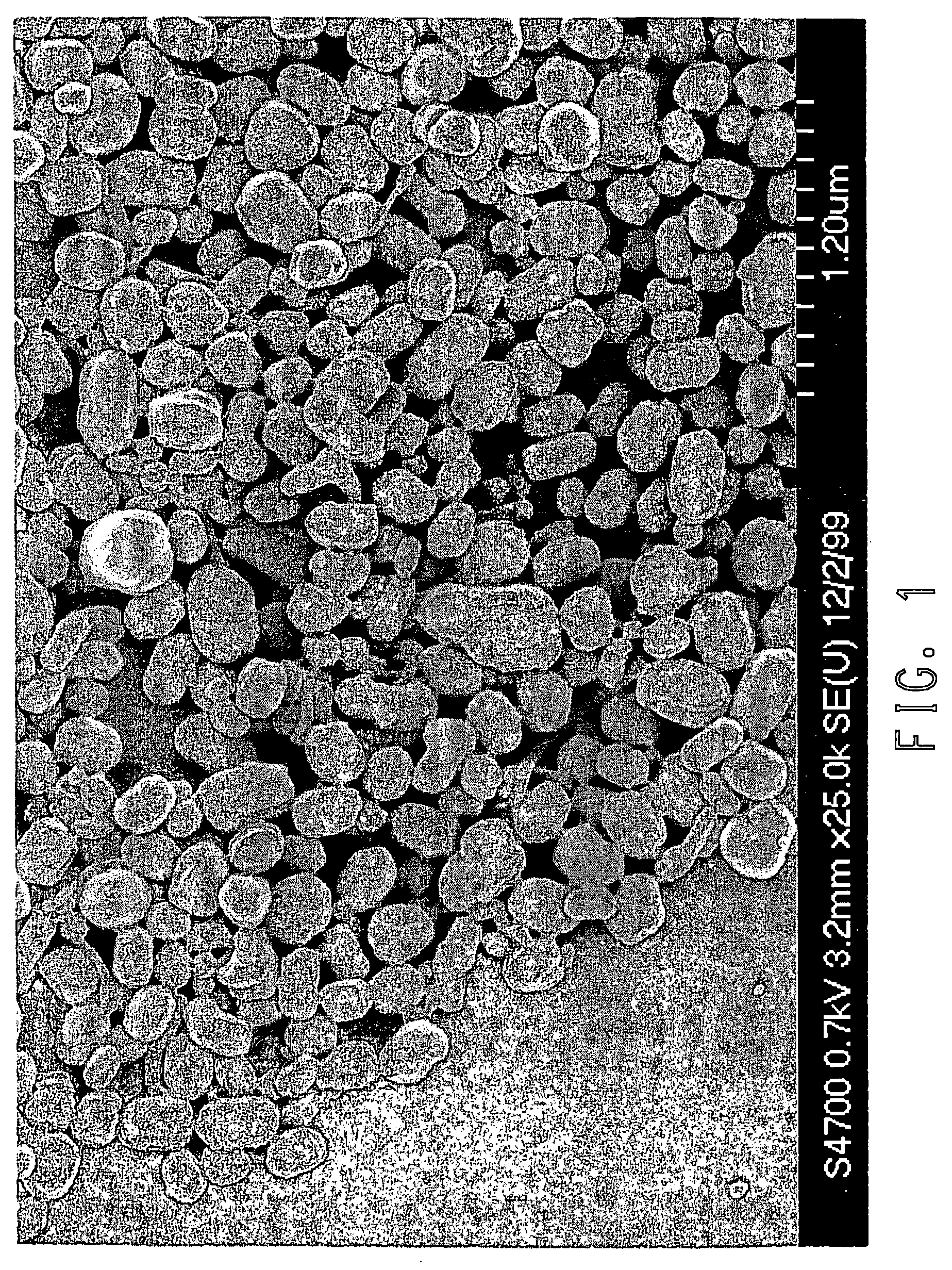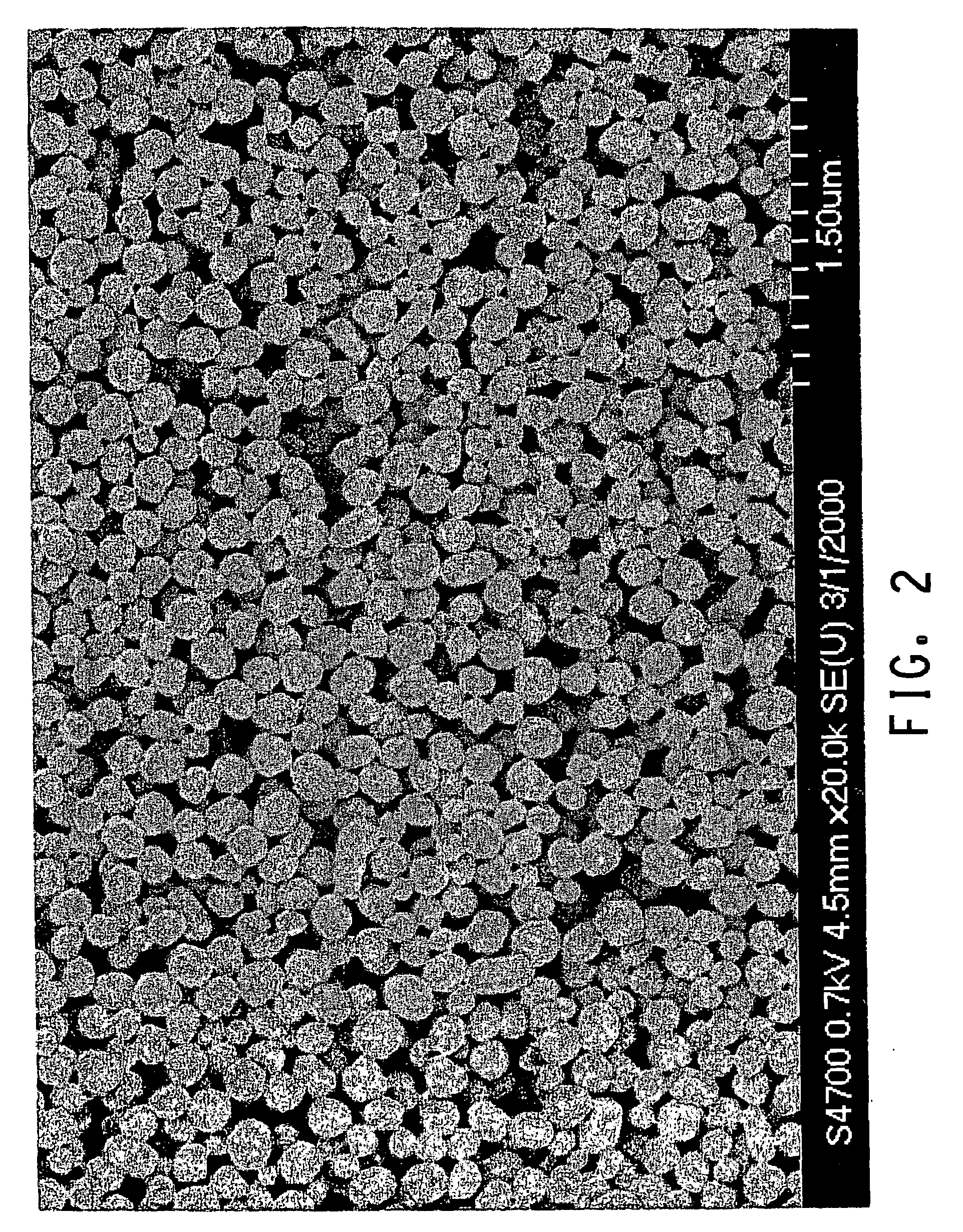High build dispersions
a high-build, dispersive technology, applied in the direction of coatings, etc., can solve the problems of inability to melt processing to form films and coatings, inability to meet the requirements of coatings, and degradation of coating quality, so as to achieve high shear stability, improve the flex life of coatings, and achieve significant cct
- Summary
- Abstract
- Description
- Claims
- Application Information
AI Technical Summary
Benefits of technology
Problems solved by technology
Method used
Image
Examples
examples
[0087]Unless otherwise specified, solution concentrations are stated in weight % based on combined weights of solute and solvent water.
example 1
[0091]This Example illustrates the polymerization of TFE to make fluoropolymer particles of this invention having a high molecular weight core of PTFE with a low molecular weight shell of PTFE. The presence of rod-shaped particles produces dispersion with high CCT. The same polykettle and procedures and essentially identical amounts of ingredients are charged initially as in comparative example A except that no Triton® is charged. The amounts of the first initiator ingredients are decreased. The concentration of DSP is decreased to 0.01 parts and the APS decreased to 0.00005 parts per part of water. The amounts of the second initiator ingredients are increased. The concentration of APS is increased to 0.005 parts and the methanol increased to 0.060 parts per part of water. Once TFE addition is stopped, the pressure is allowed to decrease to 0.79 MPa before agitation ceases. The time from kickoff to the second initiator addition is 68 minutes and the time to the cessation of agitatio...
example 2
[0092]The same procedure and essentially identical amounts of ingredients are used as in Example 1 except that the concentration of the ammonium perfluorooctanoate originally charged is increased to 0.1 part per part of water and the pumped ammonium perfluorooctanoate solution is reduced in concentration to 1 weight %. The solids content of the raw dispersion is found to be 45.5% and the RDPS is found to be 268 nm. A hand measurement of 328 particles from a SEM image shows pills and rod-shaped particles of average length of 325 and diameter 195. The particles whose length is greater than 5 times the diameter have an average length of 770 nm and diameter of 78 nm. The fraction of rod-shaped particles comprises 4.9% and by weight assuming cylindrical geometry is 1.9%. The PTFE resin obtained has an SSG of 2.2217. The dry resin is a free flowing powder. The resin is paste extruded at a reduction ratio of 1600:1 to give a continuous extrudate and an extrusion pressure of 29.4 MPa. The b...
PUM
| Property | Measurement | Unit |
|---|---|---|
| melt creep viscosity | aaaaa | aaaaa |
| melt creep viscosity | aaaaa | aaaaa |
| number average particle size | aaaaa | aaaaa |
Abstract
Description
Claims
Application Information
 Login to View More
Login to View More - R&D
- Intellectual Property
- Life Sciences
- Materials
- Tech Scout
- Unparalleled Data Quality
- Higher Quality Content
- 60% Fewer Hallucinations
Browse by: Latest US Patents, China's latest patents, Technical Efficacy Thesaurus, Application Domain, Technology Topic, Popular Technical Reports.
© 2025 PatSnap. All rights reserved.Legal|Privacy policy|Modern Slavery Act Transparency Statement|Sitemap|About US| Contact US: help@patsnap.com



